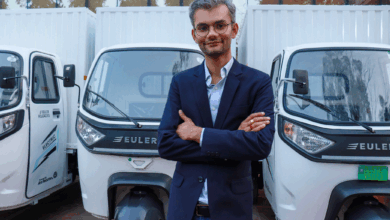How Hydrogen Buses Are Revolutionizing Urban Mobility
The Future of Public Transport

As cities around the world search for sustainable alternatives to traditional diesel-powered public transportation, hydrogen buses are emerging as a promising solution. By leveraging the power of hydrogen fuel cells, these vehicles offer cleaner, greener alternatives to traditional fossil fuel-dependent buses, reducing harmful emissions and contributing to a more sustainable future. This article explores the role of hydrogen buses in transforming urban mobility and their potential to redefine public transport systems.
The global hydrogen buses market is poised for robust growth, with its size expected to rise from US$ 1,172.7 million in 2025 to US$ 2,625.1 million by 2032, registering a CAGR of 12.2% according to the persistence market research. This surge is fueled by increasing global efforts toward sustainable and zero-emission public transport. Proton Exchange Membrane Fuel Cells (PEMFC), known for their high energy efficiency—reaching up to 65%—are driving market adoption, especially among OEMs. By 2025, PEMFCs are projected to hold a 36% market share. Europe leads with strong regulatory support, while Asia Pacific is the fastest-growing region. Notably, 30-foot transit buses dominate with a 40% share, and the 150 to 250 kW power output segment is expected to capture 29% of the market due to rising urban demand.
What Are Hydrogen Buses?
Hydrogen buses are a type of fuel cell electric vehicle (FCEV) that uses hydrogen gas to generate electricity, which then powers an electric motor to drive the vehicle. Unlike traditional internal combustion engine buses, which burn fossil fuels like diesel or natural gas, hydrogen buses operate through a chemical reaction between hydrogen and oxygen in a fuel cell. This process produces electricity, with the only byproduct being water vapor, making hydrogen buses a zero-emission transport solution.
Hydrogen buses have been in development for several years, and while their widespread use is still emerging, they have already been deployed in various cities across the globe. They offer several benefits over electric buses, including faster refueling times, longer ranges, and the ability to operate in climates where charging infrastructure for battery-powered buses may be inadequate.
Hydrogen Buses and the Shift to Sustainable Urban Mobility
The global push for sustainable urban mobility is accelerating, driven by the need to combat climate change, reduce air pollution, and decrease dependence on fossil fuels. Hydrogen buses are an integral part of this shift, offering a pathway to cleaner, greener public transportation systems.
Cities are increasingly investing in hydrogen-powered buses as part of their public transport fleets to meet climate targets and improve air quality. For instance, cities like London, Cologne, and Tokyo have already introduced hydrogen buses into their fleets as part of larger sustainability goals. By using hydrogen as a fuel source, these cities are taking a proactive approach to reducing carbon emissions from their public transportation sectors.
Additionally, hydrogen buses can provide environmental benefits beyond just reducing greenhouse gas emissions. They also help to mitigate local air pollution by producing zero tailpipe emissions. This is particularly important in densely populated urban areas where vehicle emissions are a major source of air pollution, leading to respiratory issues and other health problems.
How Hydrogen Buses Work: The Technology Behind Fuel Cell Vehicles
Hydrogen buses are powered by fuel cell technology, which generates electricity through a chemical reaction between hydrogen and oxygen. The core components of a hydrogen fuel cell include the anode, cathode, and electrolyte membrane. Here’s a simplified breakdown of how the technology works:
- Hydrogen Fuel: Hydrogen gas is stored in high-pressure tanks on the bus. When the bus is in operation, hydrogen is fed into the fuel cell stack.
- Electrochemical Reaction: Inside the fuel cell, hydrogen molecules (H2) are split into protons and electrons. The protons pass through the electrolyte membrane, while the electrons create an electric current that powers the bus’s electric motor.
- Water Vapor byproduct: As the protons and electrons combine with oxygen from the air at the cathode side of the fuel cell, the result is the production of water vapor (H2O), which is harmless and non-polluting.
- Electric Motor: The electricity generated by the fuel cell is used to power the bus’s electric motor, which propels the vehicle forward.
This process is highly efficient, with the energy produced from hydrogen used in a way that results in minimal waste. Additionally, refueling a hydrogen bus takes just a few minutes, making it a viable alternative to traditional diesel buses in terms of operational efficiency.
The Environmental Benefits of Hydrogen Buses
The environmental advantages of hydrogen buses over traditional diesel-powered buses are profound. Here are some key benefits:
- Zero Tailpipe Emissions: Hydrogen buses produce only water vapor as a byproduct of their operation, unlike diesel buses, which emit harmful pollutants such as carbon dioxide (CO2), nitrogen oxides (NOx), and particulate matter. These pollutants contribute to climate change and pose significant health risks to people living in urban areas.
- Reduced Carbon Footprint: Hydrogen fuel can be produced using renewable energy sources, such as wind, solar, or hydropower, resulting in a “green” hydrogen fuel cycle. When hydrogen is produced in this way, the carbon footprint of the buses is significantly reduced. Even when hydrogen is produced using natural gas, it still offers a lower carbon footprint than traditional fossil fuels.
- Improved Air Quality: Hydrogen buses help improve air quality by eliminating harmful emissions associated with diesel engines. This is especially important in urban areas, where vehicle emissions contribute to smog, respiratory illnesses, and other environmental problems.
- Sustainable Fuel Source: Hydrogen is the most abundant element in the universe, and when used as a fuel, it offers a virtually limitless supply of clean energy. In contrast, fossil fuels like oil and natural gas are finite resources that contribute to environmental degradation and global warming.
Challenges and Limitations of Hydrogen Buses
Despite their numerous advantages, hydrogen buses face several challenges that hinder their widespread adoption:
- High Production Costs: Hydrogen fuel cell technology is still relatively expensive, primarily due to the high costs associated with producing fuel cell components such as the membrane and catalyst. Additionally, the infrastructure required to store and distribute hydrogen fuel is costly to develop and maintain.
- Hydrogen Production Issues: Although hydrogen is abundant, the process of producing hydrogen fuel is energy-intensive. Most hydrogen today is produced from natural gas through a process called steam methane reforming (SMR), which releases carbon dioxide. To make hydrogen buses truly sustainable, a shift to renewable hydrogen production methods is necessary.
- Hydrogen Infrastructure: The refueling infrastructure for hydrogen buses is still in its infancy. There are only a limited number of hydrogen refueling stations worldwide, making it difficult for buses to travel long distances or operate in areas without refueling access.
- Energy Efficiency: Hydrogen production, transportation, and storage can result in energy losses. When comparing hydrogen fuel to battery-electric vehicles (BEVs), hydrogen buses are less energy-efficient. The entire hydrogen supply chain, from production to refueling, consumes more energy compared to direct electric charging.
Global Adoption of Hydrogen Buses: Case Studies from Around the World
While hydrogen buses face challenges, many cities and countries are already embracing the technology as part of their commitment to cleaner public transport. Here are some notable examples:
- Germany: Germany is a leader in the hydrogen bus market, with several cities operating hydrogen buses. The country has invested heavily in hydrogen infrastructure, including refueling stations and hydrogen production facilities. In fact, Germany’s Lower Saxony region has launched the world’s first hydrogen-powered bus fleet, which is expected to reduce CO2 emissions by 2,400 tons per year.
- United Kingdom: The UK is also advancing hydrogen bus initiatives, with several cities, including London and Aberdeen, operating hydrogen-powered buses. The UK government has committed to funding research and development in hydrogen fuel cell technologies and is working to expand hydrogen infrastructure across the country.
- Japan: Japan has long been at the forefront of hydrogen technology and is now deploying hydrogen buses in cities like Tokyo and Fukuoka. The Japanese government has made hydrogen a key part of its energy strategy, with plans to expand the use of hydrogen-powered vehicles in both public transportation and private sectors.
- China: China has also embraced hydrogen buses, with several cities adopting hydrogen-powered fleets. The country is making significant investments in hydrogen production and infrastructure, with the aim of becoming a global leader in hydrogen technology.
The Road Ahead: The Future of Hydrogen Buses
The future of hydrogen buses looks promising, as technological advancements and greater investment in hydrogen infrastructure are likely to reduce costs and improve efficiency. The development of green hydrogen production methods, coupled with advancements in fuel cell technology, could make hydrogen buses an even more attractive option for cities seeking to reduce emissions and build sustainable transport systems.
With growing support from governments and the private sector, hydrogen buses could play a key role in the transition to cleaner urban mobility, complementing other technologies like electric buses and autonomous vehicles. As cities around the world continue to adopt hydrogen-powered buses, the potential for a global shift toward zero-emission public transport grows ever closer.
In the coming years, we may see hydrogen buses become a common sight on the streets of cities worldwide, helping to shape the future of urban transportation.


